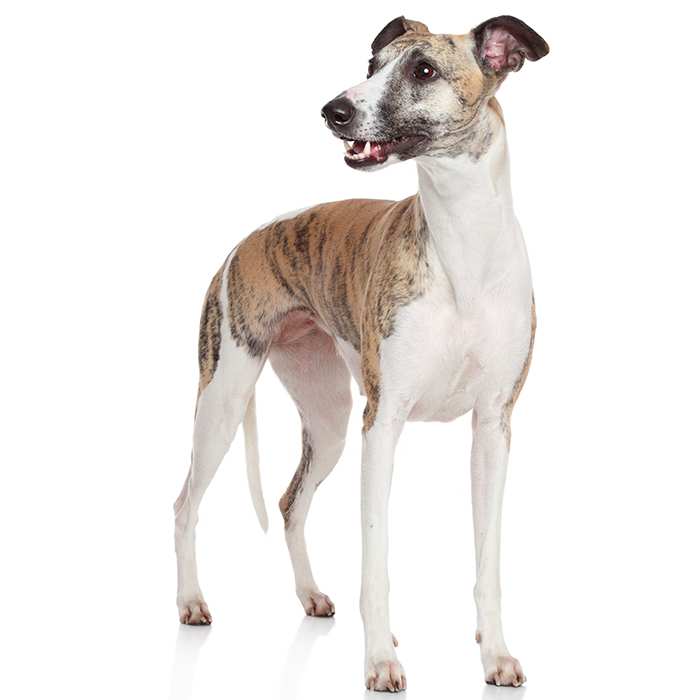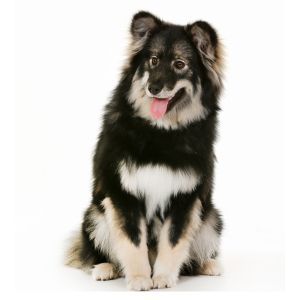Cocker Spaniel
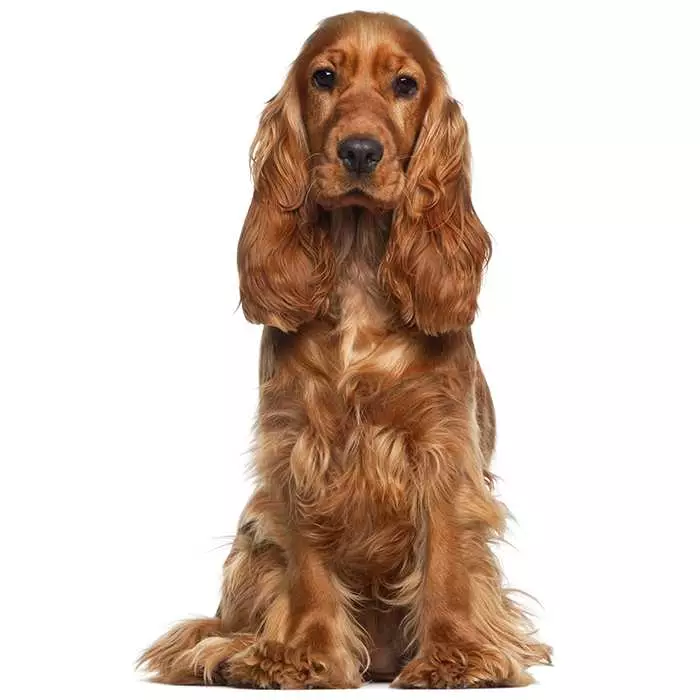

| Recommended for | Singles, families |
| Breed Classification | Gundog |
| Other names | Cocker |
| Lifespan | 12-15 years |
| Size | Medium |
| Temperament | Active, happy, affectionate, gentle |
| Intelligence | High |
| Tendency to bark | Average |
| Maintenance Level | Medium |
| Health Risk | This breed has an around average probability of having health issues in its lifetime, hence it is one of the more affordable breeds to insure. |
Insuring a Cocker Spaniel?
Get our award-winning Nose-to-Tail Cover with up to $30k annual benefit limit, up to 90% of eligible vet bills back, and no sub-limits.
Get a quick quote
Is this breed right for you?
Try our breed selector quiz to find out your best matching breed!
Insuring a Cocker Spaniel?
Get our award-winning Nose-to-Tail Cover with up to $30k annual benefit limit, up to 90% of eligible vet bills back, and no sub-limits.
Get a quick quote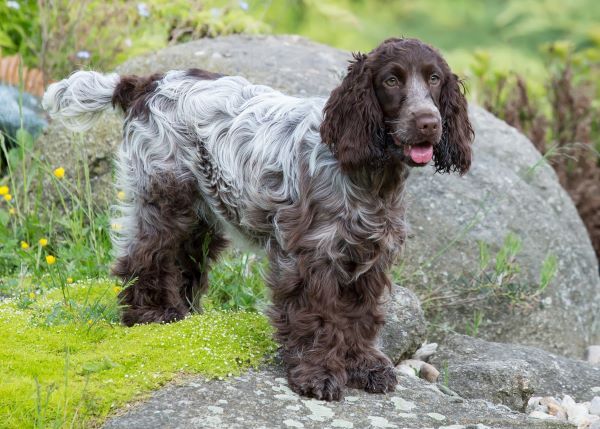
Breed history of Cocker Spaniels
The Cocker Spaniel we see today is believed to have descended from long-eared Spaniel type dogs that lived in Spain around 3000 years ago. These dogs were most likely taken to northern Europe by the Romans and to England after the Roman Conquest (43AD) of that country.
During the 18th and 19th Centuries, three types of Spaniels emerged: the toy spaniel (companion), the springer spaniel and the wood cocking spaniel (both working dogs). The wood cocking (Cocker) spaniel was very popular as they could go through the undergrowth to flush out the woodcock.
In the latter part of the 19th century, a Spaniel Club was formed in England and the dogs were classified by weight, with those over 25 pounds being classed as field spaniels and those under 25 pounds as Cockers. The smaller Cocker Spaniel filled the role of a small, active dog who was strong and sturdy enough to work happily and tirelessly all day, flushing or driving out game.
English Cocker Spaniels were brought to the US in the late 1870s and the American Spaniel Club was established in 1881, making it the oldest breed club in America. It later split up into different divisions for each different Spaniel breed.
American Cocker Spaniels arose out of breeding the smallest English Cocker Spaniels, as American wood cocks were smaller than those in England.
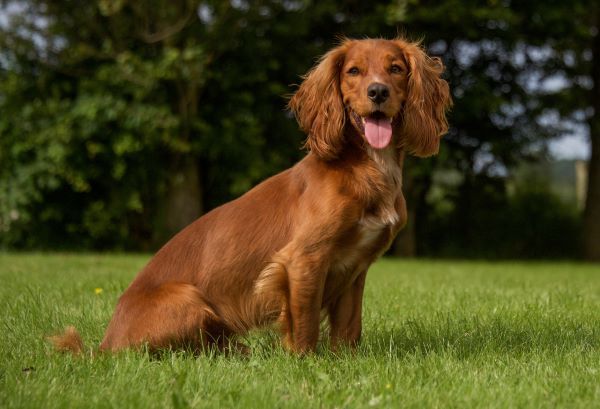
Physical description of Cocker Spaniels
The Cocker Spaniel is a medium-sized dog with a strong, compact body, large dark eyes and enormous ears that are almost guaranteed to fall into their water bowl.
There are two breeds of Cocker Spaniels: the American Cocker Spaniel and the English Cocker Spaniel. The English Cocker Spaniel has a smooth, silky coat and its legs, chest and belly are covered in longer hair called “feathering”. The American Cocker Spaniel is smaller with a shorter back, shorter muzzle and a domed head.
The coat is either a solid colour – usually black, light cream, red or brown – or multi-coloured (one of the previously mentioned colours mixed with white).
| Weight range | 13 -15 kg |
| Height range | 36 - 41 cm |
| Colours | Black, red, golden; liver (chocolate), black and tan, liver and tan |
| Coat length | Long |
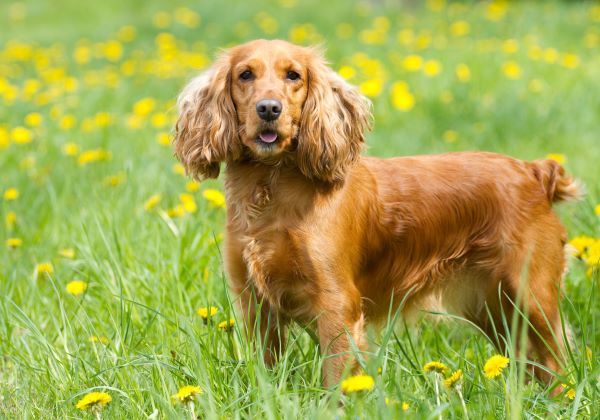
Cocker Spaniel personality and temperament
The “merry Cocker Spaniel” typically lives up to its reputation as a delightful dog. They are generally full of love and life, very eager to please and devoted to their owner and family.
Cocker Spaniels are smart, affectionate, loyal and energetic dogs. They are great with children, the elderly and other pets, as long as they are socialised and trained from a young age. They thrive on companionship and need to be included in family activities. Even just a car ride to the shop will make their day!
Because of their roots as hunting dogs, Cocker Spaniels need lots of exercise and mental stimulation. If not exercised regularly, they may develop behavioural issues. They are not a breed that can occupy themselves for alone for long periods of time and do best with company, whether their human pack or another dog.
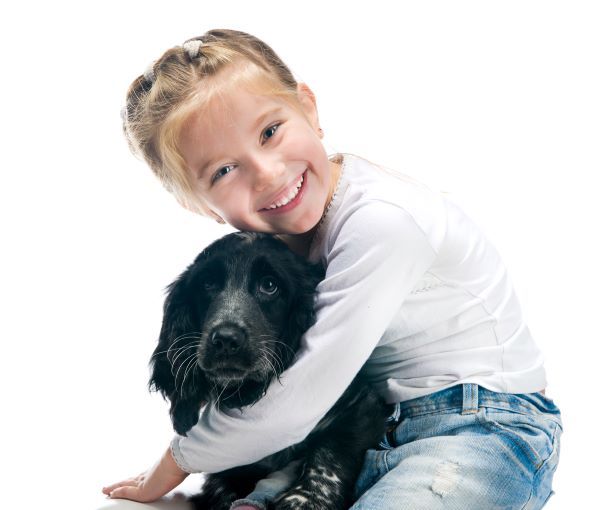
Cocker Spaniels with kids and other pets
Cocker Spaniels are great with children, the elderly and other pets, as long as they are socialised and trained from an early age.
However, care should be taken with the less-mobile, as Cockers can be very boisterous and excitable by nature, and love to jump up on people.
They also have the tendency of being right where you are planning to put your foot down as you walk, or weave between your legs as you walk.
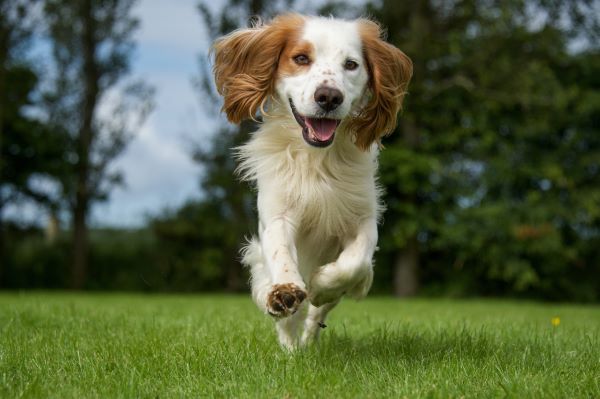
Cocker Spaniel training and exercise
Cocker Spaniels love exercise and will take as much as you can give them. A daily walk or run and a couple of hours of playtime are usually sufficient. They make fantastic family dogs, as they love to play and burn energy that way.
Adult Cocker Spaniels will thrive on a good off-lead run of up to an hour a day. After all, they are sporting dog, and are happiest when doing what they were bred to do. If that is not possible, a decent on-lead walk or a good session with a ball in the yard should do the trick. You can also provide plenty of exercise and mental stimulation through some agility, nose work or other dog sport.
Cockers love to swim and any exercise involving water, birds, and exploring exciting off-lead areas will keep the average cocker very content and happy. Like most dogs, they need to explore their world and they take great delight in new smells and experiences.
The intelligent and eager-to-please Cocker Spaniel is easy to train and very talented in the areas of obedience, agility, hunting, flyball and more. They also make fantastic therapy dogs.
| Energy level | High |
| Exercise requirements | High |
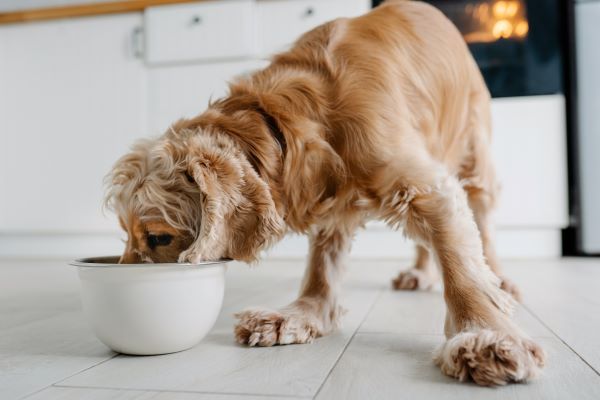
Cocker Spaniel feeding and nutrition
The Cocker Spaniel should do well on a high-quality dog food appropriate to the dog’s age (puppy, adult, or senior) and activity level.
Cockers are known to eat a lot, and if not supervised, they will eat everything they can and sometimes more.
Obesity may become a problem for this breed, so ensure that the Cocker is not overfed and keep a close eye on their calorie consumption and weight level. Treats can be an important aid in training, but should be used in moderation if weight gain is a concern.
Check with your vet if you have any concerns about your dog’s weight or diet.
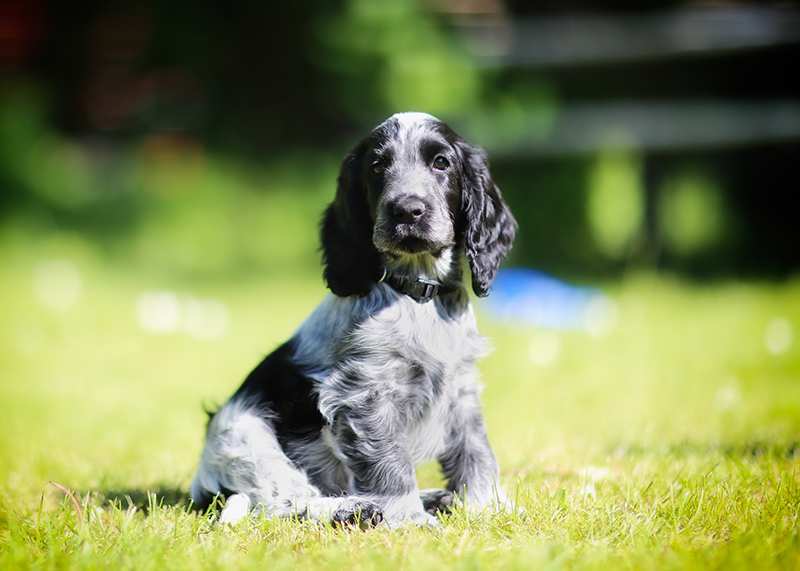
Cocker Spaniel care and grooming
The Cocker Spaniel does require considerable time and commitment to keep it looking good. Start brushing and grooming early to get your puppy used to it, as grooming will be a life-long and regular occurence.
The coat needs regular brushing to ensure that it doesn’t become mattered and tangled – groom it every three days to keep it healthy and looking good. During shedding season, groom your Cocker every day as this will help prevent matting and also prevent your furniture from becoming upholstered in dog hair.
It is recommended wasing your Cocker Spaniel every 1-2 weeks, especially if the feathers are long.
Cockers require a clip every 10-12 weeks. Many owners have their dogs clipped in a show clip, which leaves the feathers (fringes) on the dog and preserves the traditional look of the Cocker Spaniel.
Cocker Spaniels have long ears which can prevent fresh air from reaching the ear canal, creating a moist area where bacteria may proliferate. Ensure that the ears are cleaned regularly to prevent ear infections.
Health issues for Cocker Spaniels
- Progressive retinal atrophy refers to a family of eye diseases which gradually result in the deterioration of the retina, causing first night blindness then full blindness. There is no cure, but most dogs adapt very easily to the vision loss, provided their environment does not change too much.
- Cataracts occur when a cloudy membrane forms over the eye, causing vision loss. Cataracts can develop in one or both eyes and they may progress slowly or rapidly. They can be removed surgically.
- Autoimmune haemolytic anaemia is a disorder which causes the dog’s immune system to attack its own blood cells. Signs include pale gums, lethargy, jaundice and a swollen abdomen. Treatment is available for affected dogs but they should not be bred as the condition is hereditable.
- Hypothyroidism occurs when the thyroid gland does not produce enough of the thyroid hormone. Symptoms may include weight gain, seizures, loss of hair, fatigue and patchy skin. It is treatable with medication and a special diet.
 Primary seborrhea is a skin condition in which the skin becomes greasy, scaly and smelly due to the overproduction of skin cells. It is treated with medication and special shampoos.
Primary seborrhea is a skin condition in which the skin becomes greasy, scaly and smelly due to the overproduction of skin cells. It is treated with medication and special shampoos.- Allergies have been estimated to affect nearly 20% of dogs. Cocker Spaniels can be particularly prone to certain allergies, including food allergies, contact allergies and inhalant allergies. Treatment usually involves removal of the allergen from the dog’s environment or medication.
- Idiopathic epilepsy is a heritable condition which causes seizures. Seizures may also be a side effect of other conditions, so it is important to see a vet and get diagnosed.
- Hip dysplasia is a condition where the thighbone and hip joint do not fit together properly, causing pain and lameness. Less severe cases can be treated with anti-inflammatory medications, but surgery may be required for serious cases.
- Patellar luxation occurs when the bones of the patella are not aligned properly and as a result slip in and out of place, causing pain and an abnormal gait. Mild cases generally do not require treatment and do not impact too much on the dog’s life, but severe cases may require surgery.
Not all conditions are covered by Pet Insurance. For details of Bow Wow Meow Pet Insurance cover, refer to the Product Disclosure Statement.
Thinking about insuring a Cocker Spaniel
Thinking about insuring a Cocker Spaniel
Learn moreThinking about insuring a Cocker Spaniel
Learn moreFree engraved pet ID tag on sign up3
Customer Satisfaction
21 day cooling off
Easy to use Pet Portal

GapOnly® in vet claims
MORE INFORMATION
Cocker Spaniel Society of NSW: http://cockersocietynsw.asn.au/
Cocker Spaniel Club of QLD: http://www.cockerspanielclub.com/
Cocker Spaniel Club of Victoria: http://www.cockerspanielclubvic.org/


